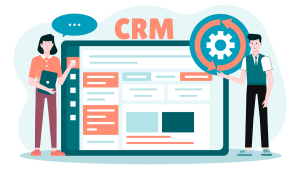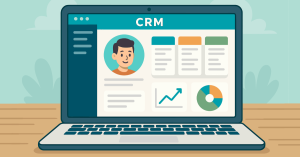The ever-changing business landscape can make planning for growth and profitability challenging. This problem is particularly true for start-up businesses with little or no customer data to make strategic decisions. For many of these businesses, setting targets and assigning budgets is akin to holding your finger in the air to see which way the wind is blowing — a precarious strategy. However, suppose you’ve been in business for some time or have access to benchmark (or even anecdotal) data from a similar organization or industry resource. In that case, there is a more scientific approach you can take toward planning for success. This approach is known as Customer Probability Analysis.
What is Customer Probability Analysis?
Customer Probability Analysis is a strategy businesses use to analyze the probability of a customer taking a specific action or making a particular purchase based on their past behavior, demographic information, and other relevant factors. It is a data-driven technique that helps businesses make informed decisions about their sales and marketing strategies by predicting which customers are most likely to convert or take a desired action.
This analysis typically involves collecting and analyzing data from various sources, such as customer purchase history, demographic information, social media activity, and website visits. This data will be available in your organization’s Customer Relationship Management (CRM) system and can be used to create predictive models to identify patterns and make predictions about future behavior.
Who Uses Customer Probability Analysis?
The only limiting factor to utilizing customer probability analysis is access to useful data. Large organizations often hire a company like Experian to crunch the vast amounts of financial, demographic, and consumer data it processes to help them plan where to open new stores, restaurants, and other outlets. Unfortunately, this “big data” approach can be a hugely complex affair and is certainly out of reach to all but the largest or well-funded businesses.
Smaller businesses will have to look to their own historic or benchmarked data. But that doesn’t mean that information isn’t any less valuable.
So what metrics should small and medium-sized businesses look towards to make smarter business decisions?
Cost of Customer Acquisition (COCA)
Hand on heart, how many businesses understand how much it costs to acquire a customer? A simple way to work this out is to take your cost of sales and marketing and divide it by the number of customers you acquire. However, this overly simple approach assumes that all of your sales and marketing strategies are firing on all cylinders and running to maximum efficiency. In reality, with multiple customer touchpoints prior to the acquisition, this can be an incredibly difficult metric to measure. Without this information, making an informed decision about marketing spend is, at best, guesswork. It’s also important to remember companies seeking funding will almost certainly need to have this data to hand. When you know how much it costs to acquire a customer, you can start to make all manner of strategic decisions to scale up your business. These decisions include increasing your marketing budget or adding extra sales professionals to your team. However, for this knowledge to be truly useful, it needs to be viewed alongside some equally important data points.
Customer Lifetime Value (CLV)
Customer Lifetime Value (CLV) highlights how much an average customer spends with your business over their lifetime as a customer. For example, using a simple subscription model, when a customer spends $100 a month with your business and stays loyal for 36 months, their CLV would be $3,600. More complex retail models will factor in repeat purchases, upsells, and cross-sales.
When you combine your CLV with your cost of acquisition, you can begin to understand how much margin you have in a sale. However, be very careful not to confuse this figure with profitability. Profit has to be found in your margins after multiple other costs relating to running your business are added into the mix.
When you have a healthy margin between your COCA and your CLV, you can do some quick math (Customer Probability Analysis) to understand how quickly your business can scale by multiplying your marketing spend. This information will also tell you when specific marketing campaigns don’t quite hit the mark. For example, if a trade show or TV campaign costs more per COCA than it returns in CLV, you should reconsider your options to protect your long-term financial security.
Average Revenue Per User (ARPU)
While Average Revenue Per User (ARPU) appears similar to CLV, it provides a more granular snapshot of the health of your business.
ARPU is a metric that calculates the average revenue generated per customer over a specific period of time. It is a helpful metric for understanding how much revenue each customer contributes to the business and can be used to track changes in customer spending patterns. ARPU can also be used to make more informed decisions about the effectiveness of various pricing strategies and identify routes to acquire and retain higher-value customers.
Word of Caution
While Customer Probability Analysis can help you make informed decisions, it is not an exact science. Just because you multiply your marketing spend doesn’t necessarily mean your sales will follow a precise pattern. Every product or service has a sales ceiling, and it’s essential to understand when you have reached this point and not throw extra resources at it to try and force it beyond this point.
Learn More
To learn more about how the marketing experts at emfluence can help you understand how Customer Probability Analysis can help your business plan for a more profitable future, contact us today at expert@emfluence.com.


